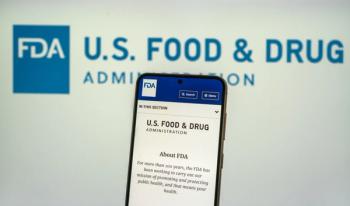
- August 2020
- Volume 88
- Issue 8
Be Vigilant With Pediatric Populations
Clinicians often reserve vigilance with drug-related issues for critically ill patients or older populations, while mistaking the resilience of childhood as a protective barrier.
Although clinicians associate many patient populations with chronic medication use, drug-drug interactions (DDIs), and polypharmacy, clinicians do not generally recognize the pediatric group as having great risk.
Clinicians often reserve vigilance with drug-related issues for critically ill patients or older populations, while mistaking the resilience of childhood as a protective barrier. Although this paradigm may accurately represent some, if not most children, a portion of the pediatric population with chronic conditions requires medication from a variety of drug classes1 and, consequently, is at an equal or greater risk for adverse drug reactions (ADRs) relative to adults.2
The disparities that affect pediatric pharmacology are inherent obstacles that are present before a drug even reaches the market.3,4 Data and FDA labeling specific to appropriate use in pediatrics, such as adolescents versus children versus infants, are insufficient. This promotes the practices of extrapolating adult drug efficacy and safety results to the pediatric populations and prescribing “off-label” medications in children.3,4 Potential drug-drug interactions (PDDIs) in children are also assumed from adult data,5 but accuracy in predicting DDIs is influenced by an additional set of patient factors specific to pediatrics.
Although DDIs are considered predictable,3,6 the advantage of predictability is obscured in children. Children maintain dynamic development and growth until about age 8 years of age.7 During this pivotal time they are at greater risk of ADRs and DDIs, as the organ systems responsible for absorbing, distributing, metabolizing, and eliminating drugs have not fully matured.3-5,7 Additional age-related variables may contribute to greater DDI risk, including different drug formulations in children, dosing, and multidrug regimens.5
POLYPHARMACY AND THERAPEUTIC CLASSES
Polypharmacy has become a prevalent approach for clinicians managing chronic and complex conditions in children.6,8 Although treatment guidelines for some conditions, such as asthma, cystic fibrosis, and HIV, justify this, other conditions, including autism spectrum disorder, have less evidence-based guidance.8,9 As children mature into adolescents, the prospect of DDIs becomes progressively less age-related but determined instead by the various drug combinations prescribed to manage chronic conditions. The TABLE10 lists some of the most common chronic medication drug classes associated with DDI.
HIGH-RISK GROUPS
Polypharmacy and the risk of DDIs are not evenly distributed across the pediatric populations receiving prescription medications but occur more frequently in specific patient groups.8
Adolescent girls, pediatric patients from low-income households, pediatric patients in foster care, and pediatric patients with disabilities are more commonly prescribed psychotropic polypharmacy.8,11
PDDIs are possible when youths take chronic medications from similar therapeutic classes and when they take multiple acute therapies, such as albuterol, macrolide antibiotics, and OTC drugs.11 Episodic health care, inconsistent insurance coverage, and OTC product labels that do not include PDDI information may precipitate the use of inappropriate drug combinations.11
HOW PHARMACISTS CAN HELP
Pharmacists from both the clinical and community settings can make meaningful interventions to prevent DDIs and subsequent complications. Community pharmacists are in a position to educate patients and parents about the cardiovascular risks associated with certain OTC and prescription drug combinations, such as citalopram and omeprazole.8,11 Additionally, pharmacists may offer medication therapy management (MTM) services to address polypharmacy in pediatric patients with chronic or complex conditions.9
Clinical pharmacists are often included in pediatric interdisciplinary care teams and, like their counterparts in the community setting, can provide MTM services.8 Pediatric pharmacists may also be depended on to prevent DDIs by ensuring appropriate prescribing practices and providing valuable insight and education covering drug information and patient safety.6 DDIs are intrinsic to polypharmacy; although preventive efforts are preferred, properly mitigating ADRs is an essential procedure. The 5 A’s—–appreciation, assessment, analysis, assistance, and aftermath––offer a clinical framework for identifying and managing adverse events that may be ADRs.2
CONCLUSION
The pediatric population is subject to unique risks, dictated by age-related factors, complex conditions, and inadequate pediatric- specific data. Pharmacists must be cognizant of such differences to ensure that pediatric patients receive appropriate and efficacious care.
Katherine E. MacDonald is a PharmD candidate at the University of Connecticut School of Pharmacy in Storrs.
REFERENCES
- Khaled LA, Ahmad F, Brogan T, et al. Prescription medicine use by one million Canadian children. Paediatr Child Health. 2001;8(suppl A):6A—56A. doi: 10.1093/ pch/8.suppl_A.6A
- Rieder M. New ways to detect adverse drug reactions in pediatrics. Pediatr Clin North Am. 2012;59(5):1071‐1092. doi:10.1016/j.pcl.2012.07.010
- Elzagallaai AA, Greff M, Rieder MJ. Adverse drug reactions in children: the double-edged sword of therapeutics. Clin Pharmacol Ther. 2017;101(6):725‐735. doi:10.1002/cpt.677
- Meyers RS, Thackray J, Matson KL, et al. Key potentially inappropriate drugs in pediatrics: the KIDs list. J Pediatr Pharmacol Ther. 2020;25(3):175‐191. doi:10.5863/1551-6776-25.3.175
- Salerno SN, Burckart GJ, Huang SM, Gonzalez D. Pediatric drug-drug interaction studies: barriers and opportunities. Clin Pharmacol Ther. 2019;105(5):1067‐1070. doi:10.1002/cpt.1234
- Rieder M. Adverse drug reactions in children: pediatric pharmacy and drug safety. J Pediatr Pharmacol Ther. 2019;24(1):4‐9. doi:10.5863/1551-6776-24.1.4
- Kearns GL, Abdel-Rahman SM, Alander SW, Blowey DL, Leeder JS, Kauffman RE. Developmental pharmacology—–drug disposition, action, and therapy in infants and children. N Engl J Med. 2003;349(12):1157-1167. doi:10.1056/NEJMra035092
- Horace AE, Ahmed F. Polypharmacy in pediatric patients and opportunities for pharmacists’ involvement. Integr Pharm Res Pract. 2015;4:113‐126. doi:10.2147/ IPRP.S64535
- Horace AE, Golchin N, Knight EMP, et al. A scoping review of medications studied in pediatric polypharmacy research. Paediatr Drugs. 2020;22(1):85‐94. doi:10.1007/s40272-019-00372-4
- Feinstein JA, Hall M, Antoon JW, et al. Chronic medication use in children insured by Medicaid: a multistate retrospective cohort study. Pediatrics. 2019;143(4):e20183397. doi:10.1542/peds.2018-3397
- Qato DM, Alexander GC, Guadamuz JS, Lindau ST. Prescription medication use among children and adolescents in the United States. Pediatrics. 2018;142(3):e20181042. doi:10.1542/peds.2018-1042
Articles in this issue
over 5 years ago
Visual Impairment May Be Early Risk Factor for Dementiaover 5 years ago
Help Patients Select Immune System Boostersover 5 years ago
Understanding the Beers Criteria Is Essentialover 5 years ago
Prepare for Anaphylaxis in School-Aged Childrenover 5 years ago
Comprehensive and Targeted Reviews Are Essentialover 5 years ago
Promoting Brain Function Is Key Amid COVID-19 Crisisover 5 years ago
Recent Law Addresses the Opioid Crisisover 5 years ago
Alexander Fleming Discovers PenicillinNewsletter
Stay informed on drug updates, treatment guidelines, and pharmacy practice trends—subscribe to Pharmacy Times for weekly clinical insights.

















































































































































































































